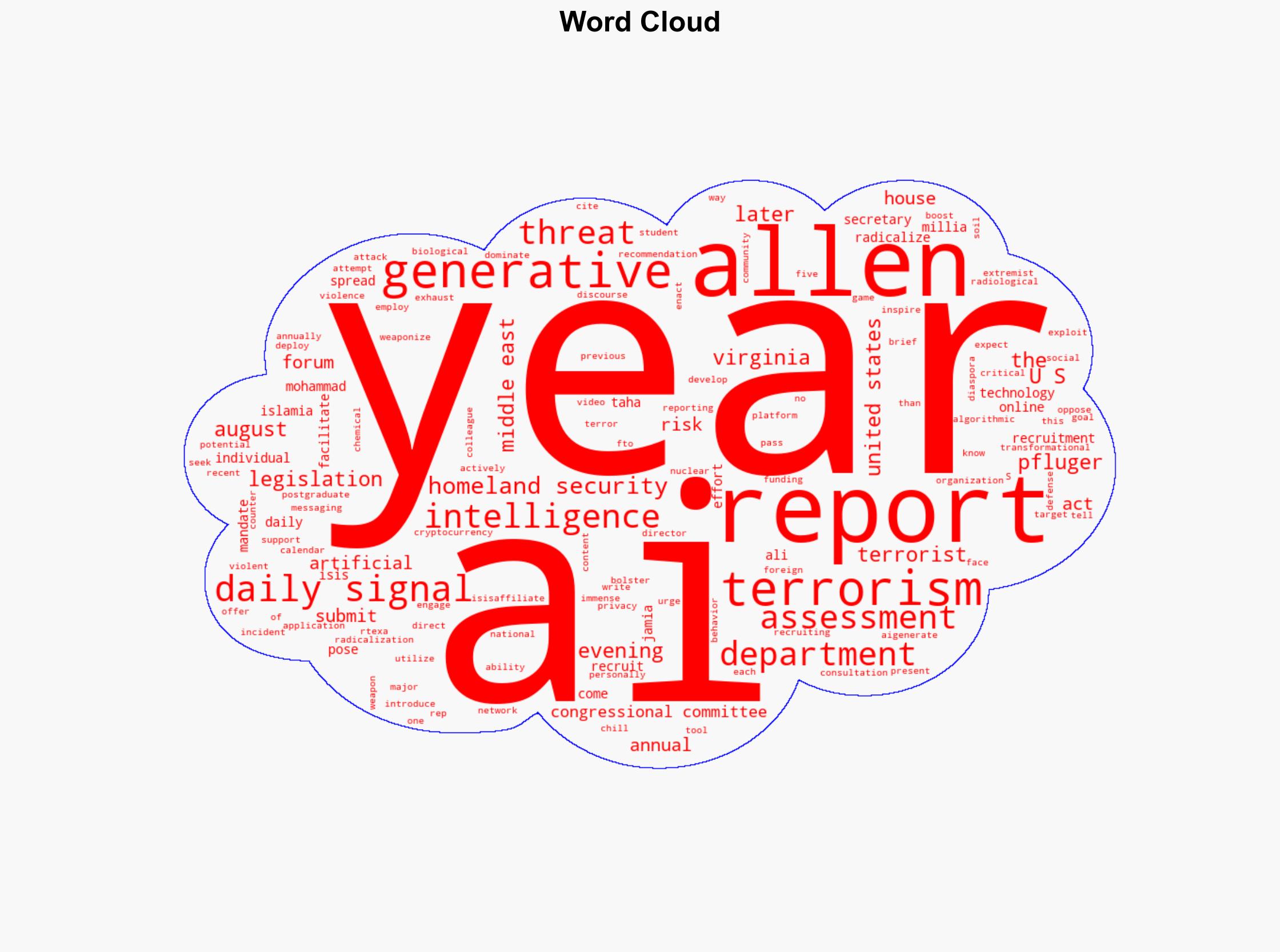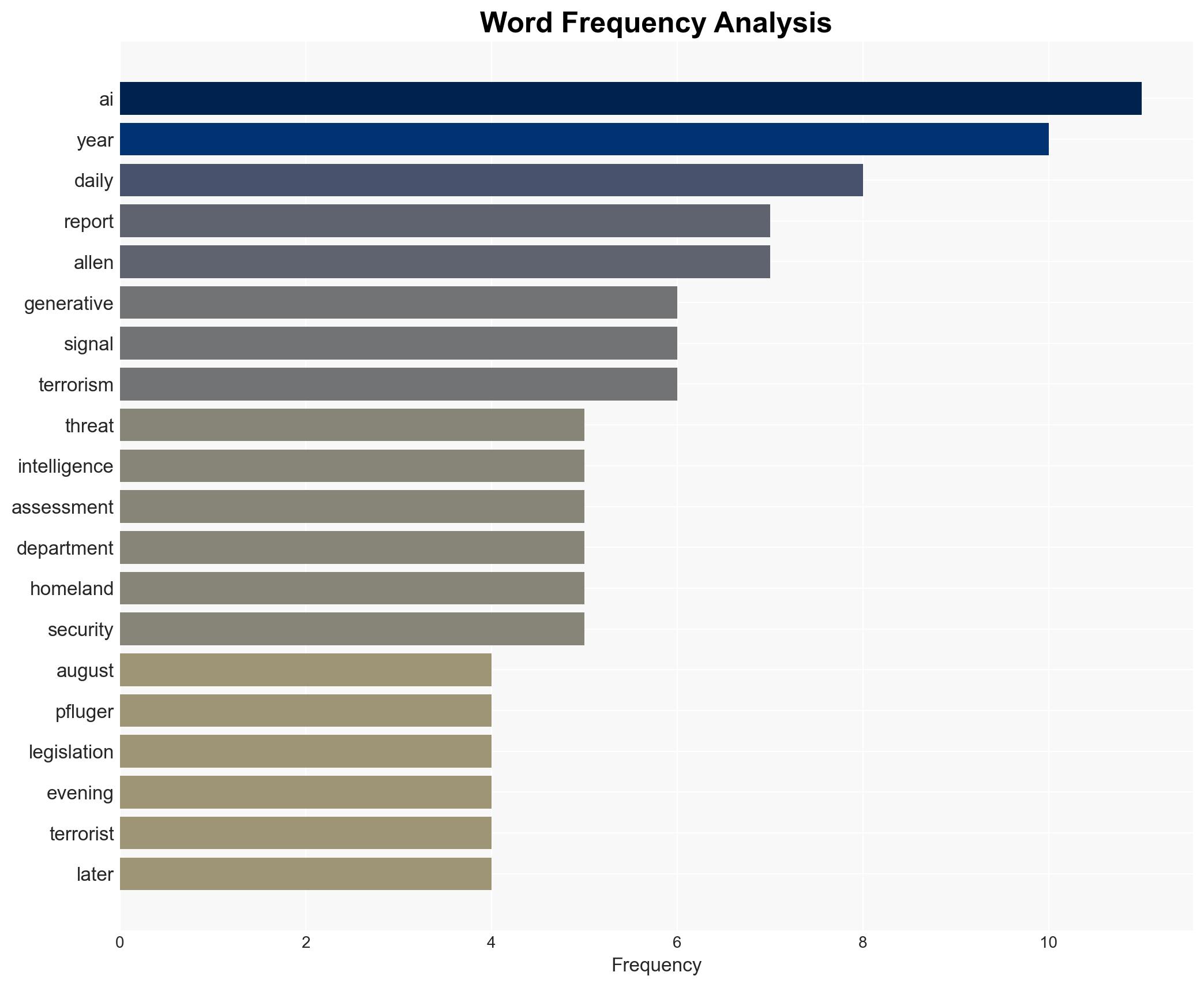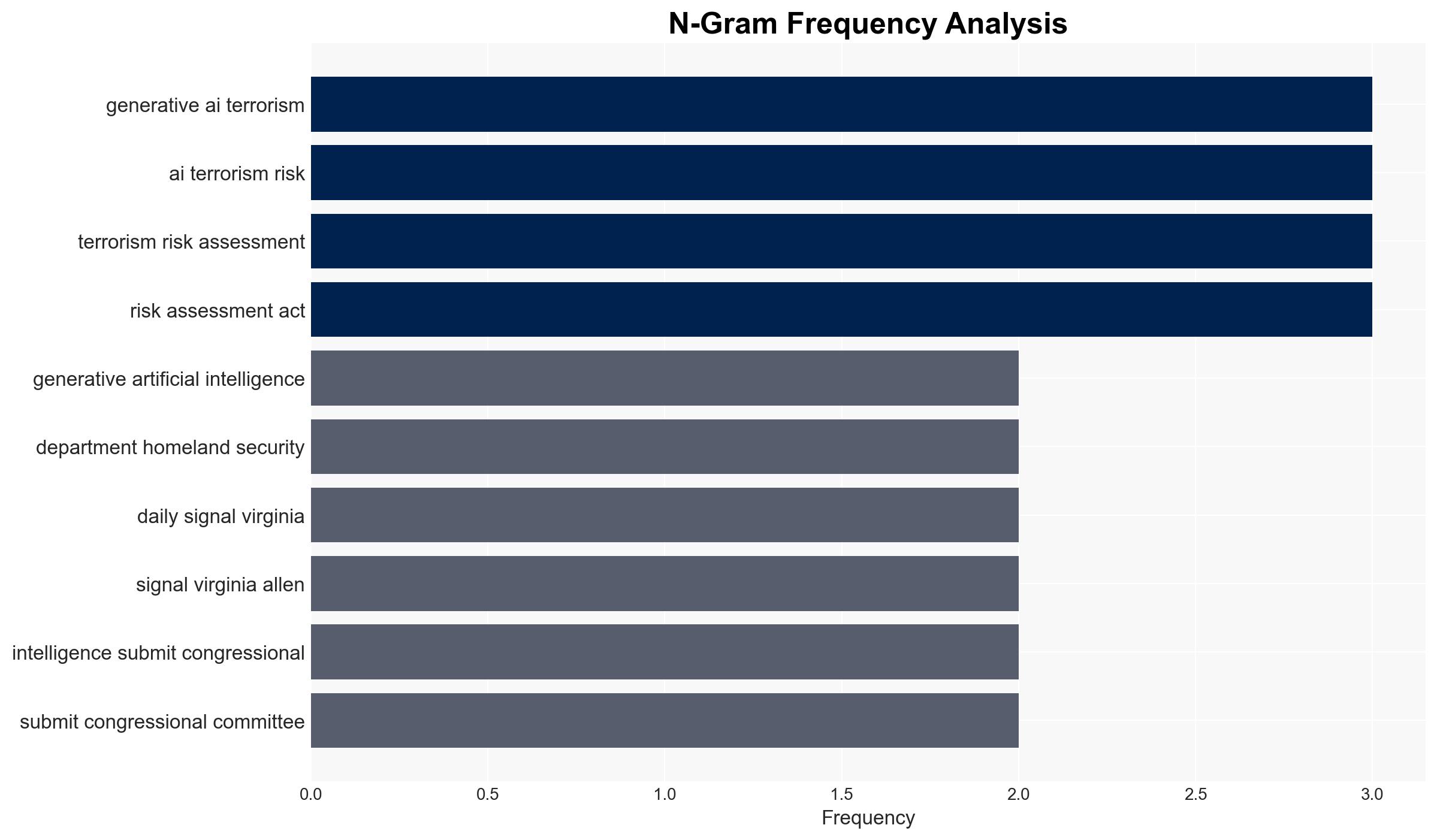Legislation to Monitor AI Threats Up for House Vote – Daily Signal
Published on: 2025-11-19
AI-powered OSINT brief from verified open sources. Automated NLP signal extraction with human verification. See our Methodology and Why WorldWideWatchers.
Intelligence Report:
1. BLUF (Bottom Line Up Front)
The proposed legislation to monitor AI threats is likely to pass the House, marking a proactive step in countering potential terrorist exploitation of generative AI. The most supported hypothesis is that the legislation will enhance the U.S. ability to identify and mitigate AI-related terrorist threats, although its effectiveness will depend on implementation and inter-agency cooperation. Confidence Level: Moderate.
2. Competing Hypotheses
Hypothesis 1: The legislation will significantly enhance U.S. counter-terrorism capabilities by providing structured assessments and recommendations to counter AI-related threats.
Hypothesis 2: The legislation will have limited impact due to potential bureaucratic inertia and challenges in effectively integrating AI threat assessments into existing counter-terrorism frameworks.
Hypothesis 1 is more likely given the structured approach mandated by the legislation, which includes annual assessments and direct involvement of the Department of Homeland Security and the Director of National Intelligence. However, the success of this approach is contingent on effective implementation and inter-agency collaboration.
3. Key Assumptions and Red Flags
Assumptions: The legislation assumes that AI poses a significant and growing threat that can be effectively countered through structured assessments. It also assumes that agencies will have the necessary resources and expertise to conduct these assessments.
Red Flags: Potential bureaucratic delays and resistance to change within agencies could hinder the timely and effective implementation of the legislation. Additionally, there is a risk of over-reliance on AI assessments without sufficient human oversight.
4. Implications and Strategic Risks
The legislation could lead to improved identification and mitigation of AI-related terrorist threats, reducing the risk of radicalization and recruitment via AI platforms. However, failure to effectively implement the legislation could result in missed opportunities to counter emerging threats, potentially leading to increased terrorist activity facilitated by AI. There is also a risk of political and public backlash if the legislation is perceived as infringing on privacy or civil liberties.
5. Recommendations and Outlook
- Ensure adequate funding and resources are allocated to the Department of Homeland Security and other relevant agencies to implement the legislation effectively.
- Foster inter-agency collaboration and information sharing to enhance the effectiveness of AI threat assessments.
- Engage with technology companies and academic institutions to leverage expertise in AI and counter-terrorism.
- Best-case scenario: The legislation leads to a significant reduction in AI-facilitated terrorist activities.
- Worst-case scenario: Bureaucratic challenges and lack of resources render the legislation ineffective, allowing AI-related threats to proliferate.
- Most-likely scenario: The legislation provides moderate improvements in counter-terrorism capabilities, with room for further enhancement through ongoing evaluation and adaptation.
6. Key Individuals and Entities
Rep. August Pfluger, Department of Homeland Security, Director of National Intelligence, Virginia Allen (reporter), Mohammad Taha Ali (postgraduate student).
7. Thematic Tags
Structured Analytic Techniques Applied
- Cognitive Bias Stress Test: Expose and correct potential biases in assessments through red-teaming and structured challenge.
- Bayesian Scenario Modeling: Use probabilistic forecasting for conflict trajectories or escalation likelihood.
- Network Influence Mapping: Map influence relationships to assess actor impact.
Explore more:
National Security Threats Briefs ·
Daily Summary ·
Support us





